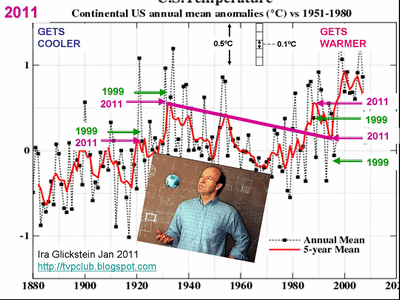Questions about the "accuracy" of the UAH data began in 2000, and Christy and Spencer refused to check their "method." That simple algebraic correction was using the correct sign for diurnal satellite drift. We're supposed to believe that the formost experts on satellite data were too stupid to know what sign to use and as deniers just happened to GUESS the sign that showed global cooling.
And even though Mears & Wentz showed them their algebraic error in 2005, Christy and Spencer didn't get around to correcting it till 2007.
OK, so now we are getting somewhere. do you have some links that show it took two years to correct the mistake, and some that hint that it was a fraud? I looked pretty hard and didnt find anything like that but if it is true I would like to know about it.


